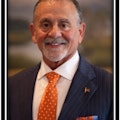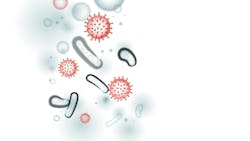Indoor air quality in the dental setting: The new gold standard to protect your patients and staff
Did you know that, on average, 90% of our time is spent indoors? The COVID-19 pandemic has raised awareness about the importance of indoor air quality (IAQ) for human health and enabled a new paradigm that simultaneously addresses wellness, sustainability, and resilience. As a practicing dentist for more than 40 years, I have wanted to learn how to protect my patients, staff, and family from the effects of poor IAQ. I knew there had to be an effective solution to achieve better air indoors.
Health risks associated with IAQ
As dental professionals, we are exposed daily to a myriad of particles, dental materials, and airborne microbial and chemical air pollutants. The concentrations of these pollutants vary with the activities and products we use, particularly during droplet production and aerosol-generating procedures. No wonder the dental professions are dubbed the “most unhealthy” jobs in North America.1 Brace yourself for some eye-opening statistics: 74% of North Americans suffer from IAQ anxiety, and six out of 10 employees threaten to quit over poor IAQ in their place of business.2,3 Dental professionals—the unsung heroes of oral health—deserve a spotlight on the air they breathe. Dental clinics, like many medical facilities, require an environment that not only fosters patient well-being, but also guarantees the safety of patients and staff.
The Occupational Safety and Health Administration (OSHA)4 considers health-care providers to be in the “very high” or “high” risk category due to their exposure to aerosols during dental procedures.5 Studies show that dentists are at high risk of exposure to infectious diseases such as COVID-19—even more so than nurses.6 Four dental professions—dental hygienists and therapists, dental assistants, dentists, and denturists—were identified as the top four occupations with the highest exposure to workplace factors associated with an increased risk of infectious transmission via aerosols.7 Research shows that fluid and particulate aerosols stay airborne up to 41 hours. These aerosols travel throughout the entire office, ultimately exposing everyone who breathes the office air. Further, health-care workers are exposed to the risk of work-related asthma (WRA), which includes occupational asthma and work-exacerbated asthma.8-10
Fortunately, there are ways to reduce bioburdens in the air. The recently released ASHRAE (The American Society of Heating, Re-frig-erating and Air-Conditioning Engineers) Standard 24111 on the control of infectious aerosols integrates numerous recommended measures, which are particularly crucial during periods with elevated risk of airborne disease transmission. Including air purification systems as part of the broader IAQ and HVAC strategy is imperative for dental practices, where maintaining wellness and safety is critical. Effective IAQ management contributes to patient health and comfort and ensures the well-being and productivity of the dental team.
Revolutionizing dentistry
Air cleaners offer the most energy-efficient and cost-effective means to meet and exceed clean-air targets, while requiring minimal operation or maintenance. The Cobalt ceiling air purification system is the most powerful air purification device available, with unmatched product specifications. Crafted by Surgically Clean Air, a leading dental partner in the air industry, the Cobalt is designed to transcend the limitations of conventional air purification systems.
The Cobalt 2x2 unit (best suited for a standard 10x10x9-foot operatory) provides up to 28.7 air changes per hour (ACH), cleans 430 cubic feet of air per minute (CFM), and operates at a whisper-quiet sound level of 47.5 dB (for reference, a “whisper” is 30 dB).12 The Cobalt 2x4 cleans over 1,000 CFM at under 50dB and is best suited for larger spaces (waiting rooms and common areas). This exceeds the clean-air target in health-care settings.11
H13 HEPA filters last two years, making them easy to maintain and highly energy efficient. The system operates independently of HVAC systems, so there is no interference or dependency on existing infrastructure and no risk of voiding current HVAC warranties. The Cobalt is the least expensive ceiling unit in the industry when measured by CFM at 50dB or less. Installing the system signifies a forward-thinking approach to patient care, emphasizing safety and a commitment to excellence that distinguishes the dental practice from others.
Statistics don’t lie.13 Dental professionals deserve a workspace that champions their health. By investing in cutting-edge air purification technology, dental offices can create an atmosphere that is safe and enthusiastically healthy for practitioners and patients. It’s time to infuse enthusiasm into dentistry by embracing indoor air purification.
Editor's note: This article appeared in the July/August 2024 print edition of Dental Economics magazine. Dentists in North America are eligible for a complimentary print subscription. Sign up here.
References
- Kiersz A, Gillet R, Hoff M. 47 jobs that will always be bad for your health, and how much they pay. Business Insider. Updated July 14, 2020. https://www.businessinsider.com/most-unhealthy-jobs-in-america-2017-4
- Tilo D. Six in 10 employees quit over poor office ‘air quality.’ Human Resources Director. February 23, 2022. https://www.hcamag.com/ca/specialization/employment-law/six-in-10-employees-quit-over-poor-office-air-quality/326436
- Belloti H. Study reveals 74% of US workers anxious over indoor air quality. Air Conditioning Heating Refrigeration News. August 19, 2022. https://www.achrnews.com/articles/146959-study-reveals-74-of-us-workers-anxious-over-indoor-air-quality
- Occupational Safety and Health Administration (OSHA). U.S. Department of Labor. https://www.osha.gov/
- Dentistry workers and employers. Occupational Safety and Health Administration (OSHA). U.S. Department of Labor. https://www.osha.gov/coronavirus/control-prevention/dentistry
- Gamio L. The workers who face the greatest coronavirus risk. The New York Times. March 16, 2020. https://www.nytimes.com/interactive/2020/03/15/business/economy/coronavirus-worker-risk.html
- Singhal S, Warren C, Hobin E, Smith B. How often are dental care workers exposed to occupational characteristics that put them at higher risk of exposure and transmission of COVID-19? A comparative analysis. J Can Dent Assoc. 2021;87:I16.
- Division of Respiratory Disease Studies. Work-related lung disease surveillance report 2007. Department of Health and Human Services. Centers for Disease Control and Prevention. National Institute for Occupational Safety and Health. https://www.cdc.gov/niosh/docs/2008-143/pdfs/2008-143.pdf
- Mirabelli MC, Zock JP, Plana E, et al. Occupational risk factors for asthma among nurses and related healthcare professionals in an international study. Occup Environ Med. 2007;64(7):474-479. doi:10.1136/oem.2006.031203
- Henneberger PK, Redlich CA, Callahan DB, et al. An official American Thoracic Society statement: work-exacerbated asthma. Am J Respir Crit Care Med. 2011;184(3):368-378. doi:10.1164/rccm.812011ST
- ASHRAE publishes Standard 241, control of infectious aerosols. News release. The American Society of Heating, Refrigerating and Air-Conditioning Engineers (ASHRAE). July 7, 2023. https://www.ashrae.org/about/news/2023/ashrae-publishes-standard-241-control-of-infectious-aerosols
- Common noise levels – how loud is too loud? International Noise Awareness Day. https://noiseawareness.org/info-center/common-noise-levels
- Wootson Jr. CR. Dentists keep dying of this lung disease. The CDC can’t figure out why. The Washington Post. March 10, 2018. https://www.washingtonpost.com/news/to-your-health/wp/2018/03/10/dentists-keep-dying-of-this-deadly-lung-disease-the-cdc-cant-figure-out-why
About the Author

Nicholas M. Kavouklis, DMD
CEO and President of Surgically Clean Air
Nicholas M. Kavouklis, DMD, CEO and President of Surgically Clean Air, is a practicing dental professional and seasoned entrepreneur with more than 40 years of experience. He has a diverse background in dental and vision products and the insurance carrier benefits industry. He is a graduate of the University of Florida and is a member of and working toward a mastership in the Academy of General Dentistry.
